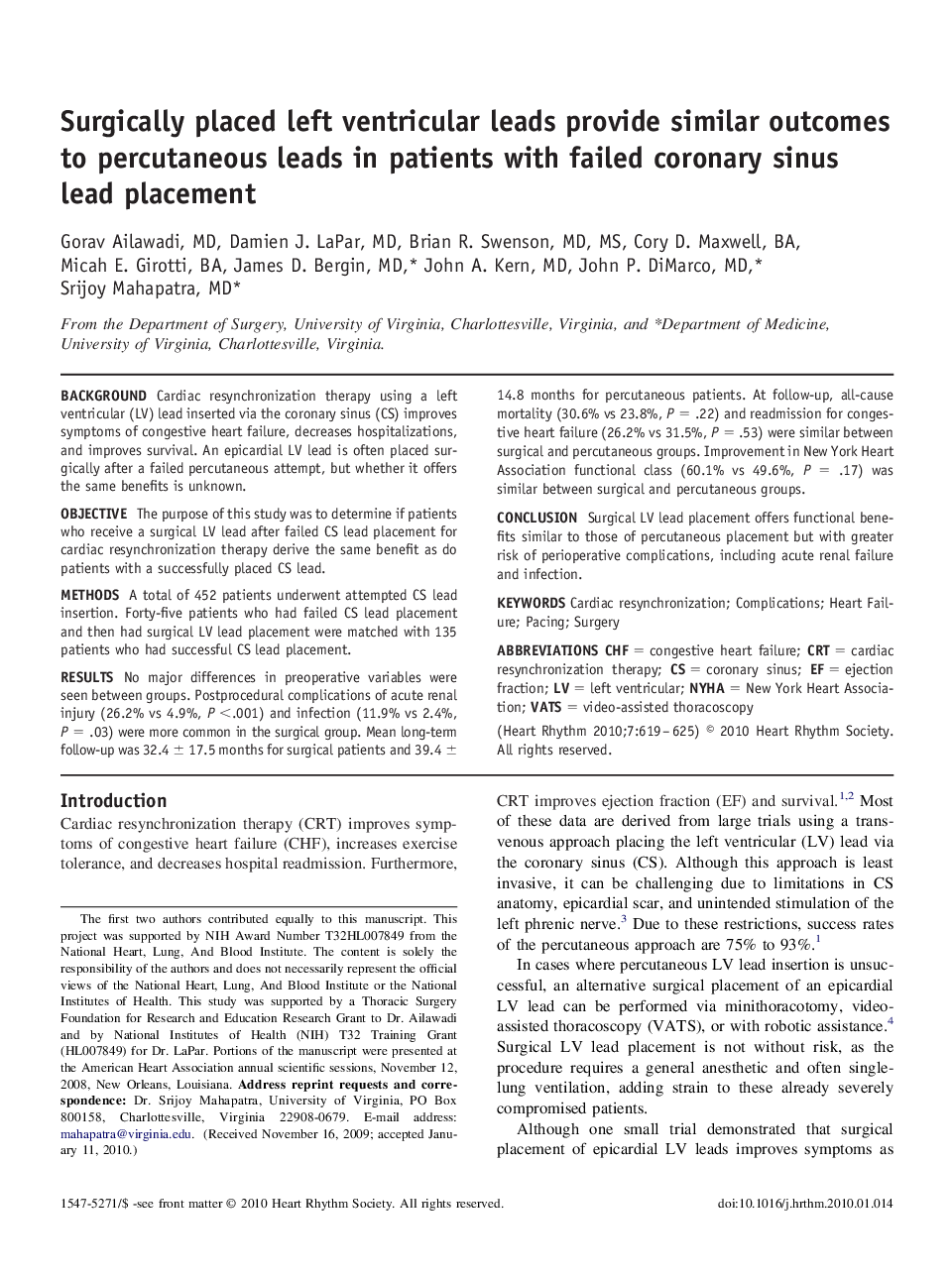| Article ID | Journal | Published Year | Pages | File Type |
|---|---|---|---|---|
| 2924130 | Heart Rhythm | 2010 | 7 Pages |
BackgroundCardiac resynchronization therapy using a left ventricular (LV) lead inserted via the coronary sinus (CS) improves symptoms of congestive heart failure, decreases hospitalizations, and improves survival. An epicardial LV lead is often placed surgically after a failed percutaneous attempt, but whether it offers the same benefits is unknown.ObjectiveThe purpose of this study was to determine if patients who receive a surgical LV lead after failed CS lead placement for cardiac resynchronization therapy derive the same benefit as do patients with a successfully placed CS lead.MethodsA total of 452 patients underwent attempted CS lead insertion. Forty-five patients who had failed CS lead placement and then had surgical LV lead placement were matched with 135 patients who had successful CS lead placement.ResultsNo major differences in preoperative variables were seen between groups. Postprocedural complications of acute renal injury (26.2% vs 4.9%, P <.001) and infection (11.9% vs 2.4%, P = .03) were more common in the surgical group. Mean long-term follow-up was 32.4 ± 17.5 months for surgical patients and 39.4 ± 14.8 months for percutaneous patients. At follow-up, all-cause mortality (30.6% vs 23.8%, P = .22) and readmission for congestive heart failure (26.2% vs 31.5%, P = .53) were similar between surgical and percutaneous groups. Improvement in New York Heart Association functional class (60.1% vs 49.6%, P = .17) was similar between surgical and percutaneous groups.ConclusionSurgical LV lead placement offers functional benefits similar to those of percutaneous placement but with greater risk of perioperative complications, including acute renal failure and infection.
